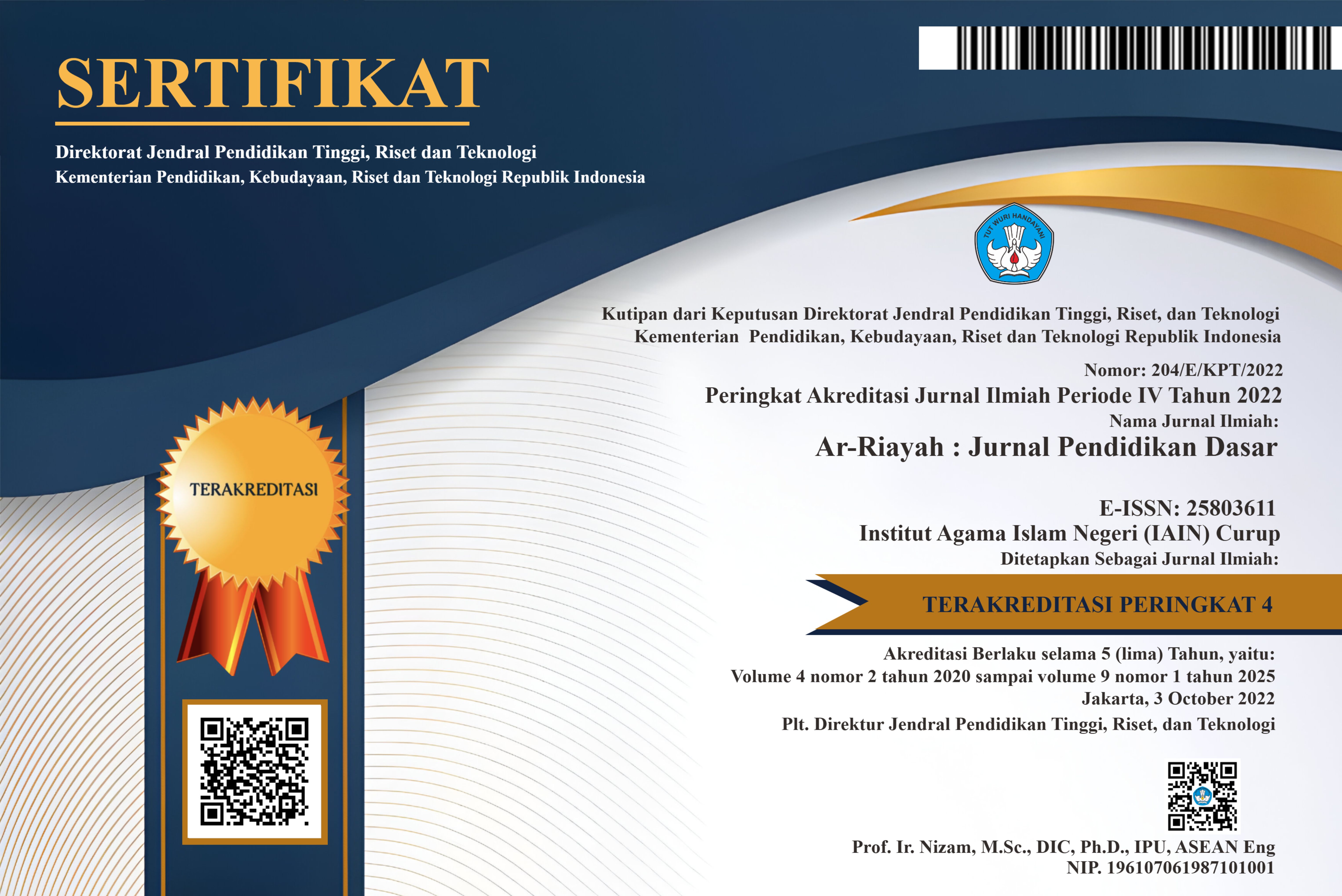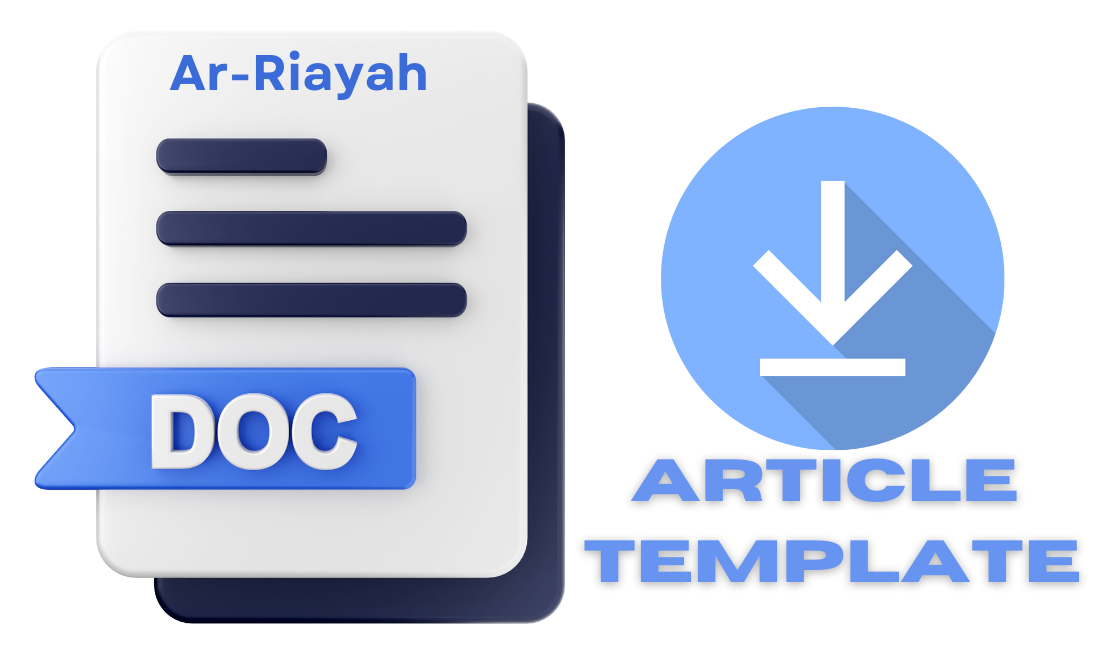The Influence of Banjar Culture-Based Ethnopedagogical IPAS Learning Resources on Elementary Students’ Engagement in Differentiated Instruction
DOI:
https://doi.org/10.29240/jpd.v9i1.11894Keywords:
Learning Resources, Ethnopedagogy, Student Engagement, Differentiated IntructionAbstract
Student engagement in differentiated instruction at SDN Berangas Barat 2 remains suboptimal. This is evident form students’ low levels of comprehension, collaboration intensity, discipline, ability to express opinions, and sustained focus during learning activities. One of the main contributing factors is the limited use of culturally relevant learning resources. Ethnopedagogy, as a pedagogical approach, is believed to transform cultural knowledge into meaningful learning resources. This study aims to examine the influence of Banjar culture-based ethnopedagogical IPAS learning resources on elementary students’ engagement in differentiated instruction. Employing a quasi-experimental method with a control group design, the study involved 46 sixth-grade students from SDN Berangas Barat 2, 23 students in Class VI A (experimental group) and 23 students in Class VI B (control group). Student engagement was measured using an observation instrument, and the collected data were analyzed using SPSS version 27, applying a two-tailed significance test with a threshold of <0,05. The results showed a Sig (2-tailed) value of <0,05. The results showed a Sig. (2-tailed) valued of <0.001. It is therefore concluded that the use of Banjar culture-based ethnopedagogical learning resources significantly enhances student’s engagement in differentiated instruction at the elementary school level.
Downloads
References
Agus, Wibowo. “Pendidikan Karakter: Strategi Membangun Karakter Bangsa Berperadaban.” Yogyakarta: Pustaka Pelajar, 2012.
Alwasilah, A Chaedar, Karim Suryadi, and Tri Karyono. Etnopedagogi: Landasan Praktek Pendidikan Dan Pendidikan Guru. Kiblat Buku Utama, 2022.
Ariyani, F, N Nurulsari, H Maulina, and I Sukamto. “The Prospective Ethnopedagogy-Integrated STEM Learning Approach: Science Teacher Perceptions and Experiences.” In Journal Of Physics: Conference Series, 1572:012082. IOP Publishing, 2020.
Binsa, Abdul Aziz, and Wiwit Purnama Putri. “Implementation of Problem Based Learning to Enhance Critical Thinking Skills in Social Studies at Madrasah Ibtidaiyah Islamiyah Kedungwaru Ngawi.” Jurnal Pendidikan Dasar 8, no. 2 (2024): 2580–362. https://doi.org/10.29240/jpd.v8i2.11376.
Dewey, John. “Introduction: Dewey’s Vision in Democracy and Education.” edited by Nicholas Tampio, xv–lvi. Columbia University Press, 2024. https://doi.org/doi:10.7312/dewe21010-003.
Fadhilah, Akhmad, Ahmad Suriansyah, and Ac Id. “Meningkatkan Aktivitas Belajar, Motivasi Dan Keterampilan Berpikir Kritis Siswa Muatan IPA Menggunakan Model PANTING Memakai Media Lilin Siswa Sekolah Dasar.” Jurnal Pendidikan Dasar 8, no. 1 (2024): 2580–362. https://doi.org/10.29240/jpd.v8i1.
Fahrutdinova, Guzaliya Zh. “Ethno-Pedagogical Factor of Polycultural Training.” International Journal of Environmental and Science Education 11, no. 6 (2016): 1185–93.
Kosasih, Engkos. Pengembangan Bahan Ajar. Bumi Aksara, 2021.
Marpaung, Claudia. “Pengaruh Pendekatan Etnopedagogi Dan Karakter Integritas Terhadap Kemampuan Literasi Budaya Siswa Sekolah Dasar.” ELSE (Elementary School Education Journal): Jurnal Pendidikan Dan Pembelajaran Sekolah Dasar 7, no. 2 (2023).
Mukhibat, Mukhibat. “Memutus Mata Rantai Radikalisme Dan Terorisme Berbasis Studi Etnopedagogi Di PTNU Dalam Membentuk Keberagamaan Inklusif Dan Pluralis.” ISLAMICA: Jurnal Studi Keislaman 10, no. 1 (2015): 222–47.
Naden, Selwen. “Pengaruh Pendekatan Etnopedagogik Dan Keterampilan Sosial Terhadap Hasil Belajar Ilmu Pengetahuan Sosial Siswa.” TERPADU: Jurnal Ilmiah Pendidikan Dasar 1, no. 1 (2023): 38–47.
Ni’mah, Putri Sukrotin, Muhammad Prayito, Joko Sulianto, and Darsino Darsino. “Analisis Pembelajaran Berdiferensiasi Sebagai Strategi Meningkatkan Keaktifan Peserta Didik Kelas IV SDN Plamongansari 02.” Journal on Education 6, no. 1 (2023): 4383–90.
Nugrahanta, Gregorius Ari, Eko Hari Parmadi, Fransiska Tjandrasih Adji, and Hilary Relita Vertikasari Sekarningrum. “Pengaruh Pembelajaran Etnopedagogi Untuk Aksara Jawa Berbasis Metode Montessori Terhadap Karakter Kecerdasan Sosial Siswa Sekolah Dasar.” Jurnal Studi Guru Dan Pembelajaran 7, no. 1 (2024): 1–12.
Purnawanto, Ahmad Teguh. “Pembelajaran Berdiferensiasi.” Jurnal Pedagogy 16, no. 1 (2023): 34–54.
Putra, Purniadi, Akbar Yuli Setianto, and Abdul Hafiz. “Etnopedagogic Studies in Character Education in the Millinneal Era: Case Study MIN 1 Sambas.” Al-Bidayah: Jurnal Pendidikan Dasar Islam 12, no. 2 (2020): 237–52.
Rukmi, Dian Aprelia, Ana Firotun Nisa, Armi Yustina, Desti Vitriani, and Siwi Nurhayati. “Pembelajaran Berdiferensiasi Dalam Menumbuhkan Percaya Diri Siswa SD.” Jurnal Ilmiah Pendidikan Citra Bakti 10, no. 4 (2023): 798–810.
Sakti, Syahria Anggita, Suwardi Endraswara, and Arif Rohman. “Revitalizing Local Wisdom within Character Education through Ethnopedagogy Apporach: A Case Study on a Preschool in Yogyakarta.” Heliyon 10, no. 10 (2024).
Selasih, Ni Nengah, and I Ketut Sudarsana. “Education Based on Ethnopedagogy in Maintaining and Conserving the Local Wisdom: A Literature Study.” Jurnal Ilmiah Peuradeun 6, no. 2 (2018): 293–306.
Siregar, Rafika. “Meningkatkan Kemampuan Mengemukakan Pendapat Siswa Menggunakan Model Time Token Pembelajaran IPS Kelas V Sekolah Dasar.” Meningkatkan Kemampuan Mengemukakan Pendapat Siswa Menggunakan Model Time Token Pembelajaran IPS Kelas V Sekolah Dasar, 2018.
Suardi, Moh. “Belajar & Pembelajaran.” Deepublish, 2018.
Sudjana, Nana. Penilaian Hasil Proses Belajar Mengajar. Remaja rosdakarya, 2021.
Sugiyono. Metode Penelitian Kunatitatif Kualitatif Dan R&D. Alfabeta, Bandung, 2018.
Susilaningtiyas, Dwi Erna, and Yusuf Falaq. “Internalisasi Kearifan Lokal Sebagai Etnopedagogi: Sumber Pengembangan Materi Pendidikan Ips Bagi Generasi Millenial.” Sosial Khatulistiwa: Jurnal Pendidikan IPS 1, no. 2 (2021): 45–52.
Sutrisno, Lucky Taufik. “Penerapan Pembelajaran Berdiferensiasi Sebagai Salah Satu Pemecahan Masalah Masih Kurangnya Keaktifan Peserta Didik Saat Proses Pembelajaran Berlangsung.” COLLASE (Creative of Learning Students Elementary Education) 6, no. 1 (2023): 111–21.
Wibowo, Agus. “Pendidikan Karakter: Strategi Membangun Karakter Bangsa Berperadaban,” 2012.
Winata, I Komang. “Konsentrasi Dan Motivasi Belajar Siswa Terhadap Pembelajaran Online Selama Masa Pandemi Covid-19.” Jurnal Komunikasi Pendidikan 5, no. 1 (2021): 13.
Wulandari, Eka Putri, and Rosmiati Rosmiati. “Pengaruh Problem Based Learning Berbasis Etnopedagogi Terhadap Pemahaman Sejarah Materi Kearifan Lokal Kelas IV SD.” Jurnal Review Pendidikan Dan Pengajaran (JRPP) 7, no. 3 (2024): 8688–96.
Yustiara, Rati Ismidiah, Teddy Alfra Siagian, and Edi Susanto. “Analisis Kemampuan Pemecahan Masalah Matematis Siswa Kelas Vii Smpn 4 Kaur Pada Materi Perbandingan Berdasarkan Langkah Penyelesaian Polya.” JEMS: Jurnal Edukasi Matematika Dan Sains 9, no. 2 (2021): 313–26.
Downloads
Published
How to Cite
Issue
Section
Citation Check
License
Copyright (c) 2025 Wahyudi Rakhman Wahyudi Rakhman, Bambang Subiyakto, Syaharuddin, Mutiani, Ersis Warmansyah Abbas

This work is licensed under a Creative Commons Attribution-NonCommercial-ShareAlike 4.0 International License.
Authors who publish with Ar-Riayah: Jurnal Pendidikan Dasar agree to the following terms:
Authors retain copyright and grant the journal right of first publication with the work simultaneously licensed under a Creative Commons Attribution-NonCommercial-ShareAlike 4.0 International License (CC BY-NC-SA 4.0) that allows others to share the work with an acknowledgment of the work's authorship and initial publication in this journal.
Authors are able to enter into separate, additional contractual arrangements for the non-exclusive distribution of the journal's published version of the work (e.g., post it to an institutional repository or publish it in a book), with an acknowledgment of its initial publication in this journal.
- Authors are permitted and encouraged to post their work online (e.g., in institutional repositories or on their website) prior to and during the submission process, as it can lead to productive exchanges, as well as earlier and greater citation of published work (See The Effect of Open Access).










